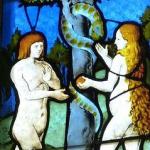The Wand Chooses the Wizard -- Ritual Tools
Most Witches agree that magic comes from within, not from any specific magical objects. As Cunningham explains, “These tools aren’t necessary to the practice of Wicca. However, they enrich rituals and symbolize complex energies” (25). Ritual tools enhance many Witches’ experiences, allowing for a focus of mind. The four primary tools of the Witch are the wand, the athame, the chalice, and the pentacle. All of these tools can be seen in some form in the Harry Potter books and films, though some are less obvious than others.
In Harry Potter’s world, the wand is the most important magical tool. While young witches and wizards can perform some magic without a wand, nearly all their magical training includes wand-work. Most of the wands look very similar, though they are made of different types of wood with different “core” substances. For example, Harry’s wand has at its core the feather of a phoenix, while other wands have dragon heartstrings or unicorn hair as their cores. Some are decorated or carved in specific patterns. In the books and films, wands are used as weapons, to direct curses and jinxes including the killing curse that Voldemort used to kill Harry’s parents. They are also used for protection, healing, and general charms (like the levitation charm used in the first film). Beginning with the second film, wizards and witches “duel” with their wands using rules very similar to fencing. The wand duels in Order of the Phoenix were so complex the director hired a specific wand choreographer, and each character developed their unique wand stance and technique. The wand is used as a unique magical tool to focus intention, much like a Witch’s wand, though it is used for a much wider variety of magical practices in Harry’s world. Its use is almost always projective, whether sending out “sparks,” spells, or even sauce for Molly Weasley’s cooking.
The other projective magical tool in Witchcraft is the athame, a short to medium length ceremonial dagger with a double-edged blade. Since it is usually not meant to cut anything material, the sharpness of the blade is not as important as the idea and focus of its use (Cunningham, 30). It is also one primary tool used in the symbolic Great Rite, used to represent the God. As the athame is plunged into the chalice, energy is channeled down to fertilize the creation of life and magic.
While less common than the athame, the magical sword is a powerful tool used in similar ways. “The stories of swords with magical powers and names are quite common in mythic literature, and swords are nothing more than large knives,” claims Cunningham. The witches and wizards in Harry Potter’s world do not use ritual blades in most of their spellwork. The only example of a blade being used in a spell is in the scene of Voldemort’s return at the end of Harry Potter and the Goblet of Fire, when Wormtail used a double-edged blade to cut off his own hand and to draw blood from Harry’s arm for the rebirth spell. This stereotypical dark use of a ritual blade has little resemblance to the use of an athame. Most of the things a Witch would do with an athame (protection, binding, and fire or air-related spells), the witches and wizards at Hogwarts do with their wands. However, the films do have a significant magical blade: the sword of Griffindor, which Harry pulls out of the Sorting Hat at the end of The Chamber of Secrets and then uses to kill the basilisk. In a reverse of the Great Rite, Harry plunges the sword upward, bringing death to the beast. A few moments later, by plunging the basilisk’s tooth into the diary, he restores life to Ginny Weasley, completing the cycle of destruction and creation. This certainly resonates with a Witch’s understanding of the use of a magical blade.
The third primary tool of a Witch, the chalice, is a cup or goblet, which represents the womb, the site of creation. It also acts as a force of boundaries to hold in the free-flowing water. It acts as a receptacle for energy and inspiration. It is also one primary tool used to in the symbolic Great Rite, used to represent woman and the Goddess. Cauldrons are essentially used in the same way magically as chalices, though often they contain fire as well as liquids. According to Cunningham, “The cauldron is the Witch’s tool par excellence . . . The Wicca see the cauldron as a symbol of the Goddess, the manifested essence of femininity and fertility” (29). Another version in myth of the sacred vessel was the Holy Grail that captured the blood of Christ (sometimes believed to be a woman who actually “received” the royal bloodline). The search for the cup connects to the search for the feminine, the receptive, and the intuitive -- the Goddess.




